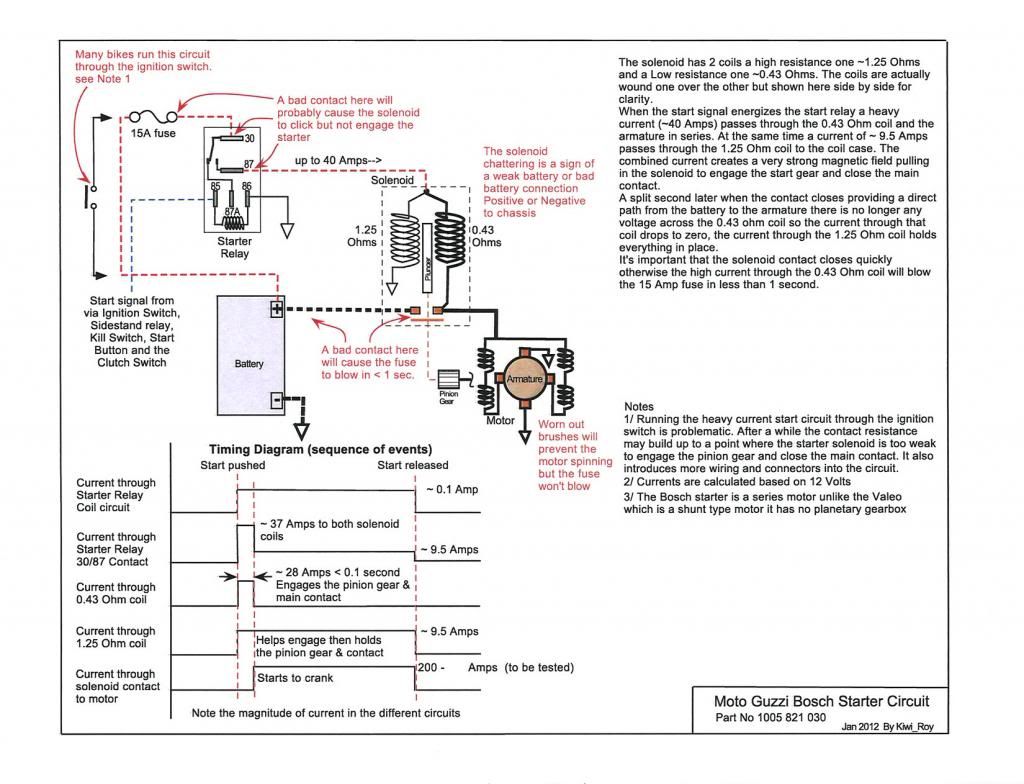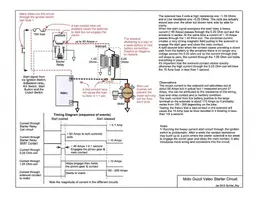I read the whole entire thread.
FIrst, I think that the issues with CARC bikes need to be considered separately, even though there are some similarities in the problem. So here I am only talking about CARC bikes with computer controlled starting. The starter button wire goes straight into the ECU. But there are 2 relays involved, and the mini fuse block or auxilliary fuse block and nothing has been mentioned about the other relay.
No one in the thread seems to distinguish between bikes with the start button you have to hold down (older) vs. the ones where you just touch the button.
Please correct me if I am wrong: CARC bikes with computer controlled starting, do not require you to hold down the starter button in order to start. Upon just touching the start button, the system should kick in and hold in cranking mode itself, until it starts.
I have been suffering from the non-start issue on my 08 Norge ever since it was new. The dealer fixed it a few times, but I don't think they ever learned much. I've been towed several times. One time I fixed it by replacing the start relay. But the problem kept coming back. I have a new lithium battery, no corrosion on terminals, new relays, and the actual solenoid and starter motor work just fine if the solenoid actuating wire from the start relay is given 12v directly. The problem centers around the relays and the ECU that control starting. If the start button only went to the relay directly, this issue would be more like the older bike issues mixed into this thread. I have been seeking, on my own, a definitive fix to this annoying issue.
Here are my current ideas, and I invite comment and criticism:
1) the failure mode on CARC bikes can be 2 stage: the bike can either totally fail to start (starter relay clicks) or it can go into a mid stage failure in which you can still start by holding the button down. If you ignore this mid stage the total failure will soon happen.
2) I found that the failure could be cured by replacement of non blown fuses in the auxilliary (2ndary) fuse block located just in front of the Tool pouch area under the seat. This has 6 mini fuses (5 on Euro bikes with no ABS etc.).
In this fuse block, a fuse would look perfectly good but if you replaced it the system would function properly again, for a while. In addition, if you were to scrape the original fuse's mini spade terminals, you could also get it to work.
Until I saw Carls nice wiring diagram, I mistakenly thought that fuse D was controlling the yellow wire to the starter relay. This caused me to independently decide to run the yellow wire straight to the relay, taking the relay out of the circuit with the tail light and ignition switch power to lights circuit. This is from fuse B. I went from battery via a 30A fuse in separate holder, straight to the relay, with the other yellow wire carefully removed from the relay plug and taped over.
3) for me, the routing of the yellow wire straight from the battery to terminal 3 on the start relay worked at first, but quickly, the problem went back to the failure mode where you need to hold down the button.
4) now I plan to also route, straight from the battery, the orange wire coming from mini fuse D in the auxilliary fuse block. This wire does nothing else but go straight from battery, through the fuse, to terminal 30 on the Main Injection Relay (#29 on Carl and factory schematics). When the ignition switch is turned on, this relay switches power from the orange wire to a circuit with the ECU, auxilliary injection relay start button, and starter relay on the lower power side, with a wire I think is red and black, or orange and black. If this circuit does not get enough power, the system will only work if you hold down the button. This is why, when I would replace or scrape terminals, on the fuse here, I could fix the problem temporarily. This relay is different from the start relay, it is a VF-4 type, with terminals 30, 87, 85 and 86. Hella number 4RA940010-71 and Guzzi/ Aprilia number AP8124869. It is a hard to find relay because it features a resistor and diode which I think are there to protect the ECU (correct me if you want). I was not able to find this outside the motorcycle world. I replaced this with the same relay, easily locally available, except without the resistor and diode, and this showed that the actual relay was ok. It appears to be, like the starter relay, the power supply to this relay and not the relay itself. Still, I plan to carry a spare just like I carry a start relay and fuses, and wiring diagram- small insurance items. No one in this thread has mentioned this VF-4 relay.
5) my current hypothesis about this whole failure, is that the main cause is that the large current spikes needed to operate the system as it is supposed to function (i.e. by just touching the start button and the system taking over) cause some sort of deterioration of the connections in the mini fuse box, such that resistance increases, and then either of the 2 failure modes ensues. The current needed to kick in and hold this starting system is such, that the connections and extra wires in the overall system (as mentioned in this thread) are such that resistance builds and these failures happen. I think that basically any circuits that are going to have these high current spikes are going to need to be powered by heavier duty connections. My replacement wires were heavy gauge and with larger size fuses, just to these power connections on the 2 relays, and with soldered terminals. It remains to be seen whether the same fuse connection deterioration will occur on these separate fuse holders- perhaps upgrading to all gold plated terminals would help this. It could well be, that complete replacement of the auxiliary fuse block with its terminals, perhaps soldering them, would cure the issue until the corrosion or surface change in these terminals, came back through exposure to the current spikes. But this silly little fuse block is really inadequate for these kinds of power circuits.
6) I have been scared that really the fundamental fault was some computer thing, or that making fixes like this, would cause damage to the ECU, but so far that has not proved to be the case. It is more like, these wimpy connections do not allow the button, ECU, and relays as well as the starter solenoid, to draw as much current in the initial spike as they actually need to. This momentary high current draw causes the relays to kick in and hold to crank the motor until it starts. If it's already warm, this time is much shorter.
Let me know your thoughts.



